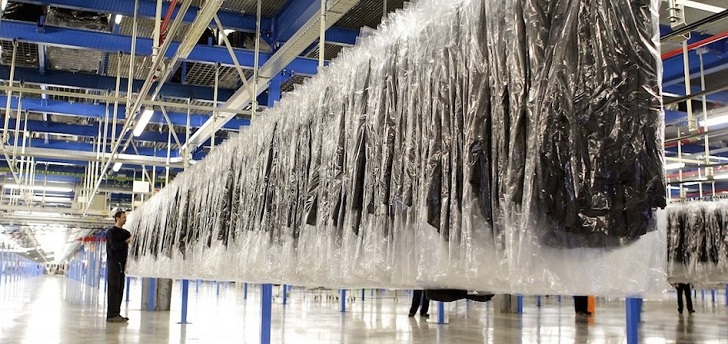Inditex sells more with less: reduces its inventory for the second quarter in a row
The Spanish giant has reduced its stock by 5% in the third quarter. Its weapons? Store optimization and Rfid.

It was the most repeated question at the analyst conference: how is it possible to grow 7.5% with 5% less stock? While stock of rivals such as H&M has skyrocketed to over 4 billion dollars, Inditex’s has reduced it this year for the first time since 2012. The reason? Implementation of Rfid technology, which will be completed next year, and optimization of the store network, underway since 2012.
Inditex ended the first half of its fiscal year with an inventory of 2.5 billion dollars, 5% less than the same period of the previous year. In the third quarter (ended in October), the group again reduced it by another 5%, to 3.5 billion dollars. The last time the group had reduced its stock was in the second quarter of 2012, with a drop of just 1%.
Maintaining a low stock is one of the keys to Inditex business model, based on a production in short and flexible series based to demand. “With the support of technology, we are able to run out business model even more efficiently,” stated Pablo Isla, executive chairman of the company.
The reduction of the stock is due, on the one hand, to the implementation of radiofrequency identification system (Rfid), which by the end of next year will be present in all the concepts and stores of the group.
This system is expanding more and more in the sector and allows the company to keep a greater and more updated control, of the stock that is in the stores. With this system, it is possible to integrate stock of physical stores and ecommerce, which allows, for example, to use the inventory of stores for online orders.
The second key to the reduction of stocks is, as Isla explained yesterday, the process of optimizing the store network that the group started in 2012. The executive explained that in Bilbao, the Spanish city, for example, the company now has a large flagship store that replaced four other smaller stores.
In Bilbao, the company has reduced its stock by 20% and increased sales with the new store
“We are selling more with this store than with the other four stores combined and with 20% less inventory,” stated the executive. Between 2012 and 2017, the company closed 1,064 points of sale, opened 2,994 new ones, refurbished 1,241 and expanded another 907. In 2018, another 355 stores were closed, 370 stores were opened and 226 more were refurbished. In addition, the group said that the new stores are 39% larger, on average, than those of 2012.
One of the consequences of better stock management is the increase of full price sales. Although the company does not share this information, it has improved its gross margin, with an increase of 8% in the third quarter, to represent 58.2% of the company’s sales.


info@themds.com
Validation policy for comments:
MDS does not perform prior verification for the publication of comments. However, to prevent anonymous comments from affecting the rights of third parties without the ability to reply, all comments require a valid email address, which won’t be visible or shared.
Enter your name and email address to be able to comment on this news: once you click on the link you will find within your verification email, your comment will be published.